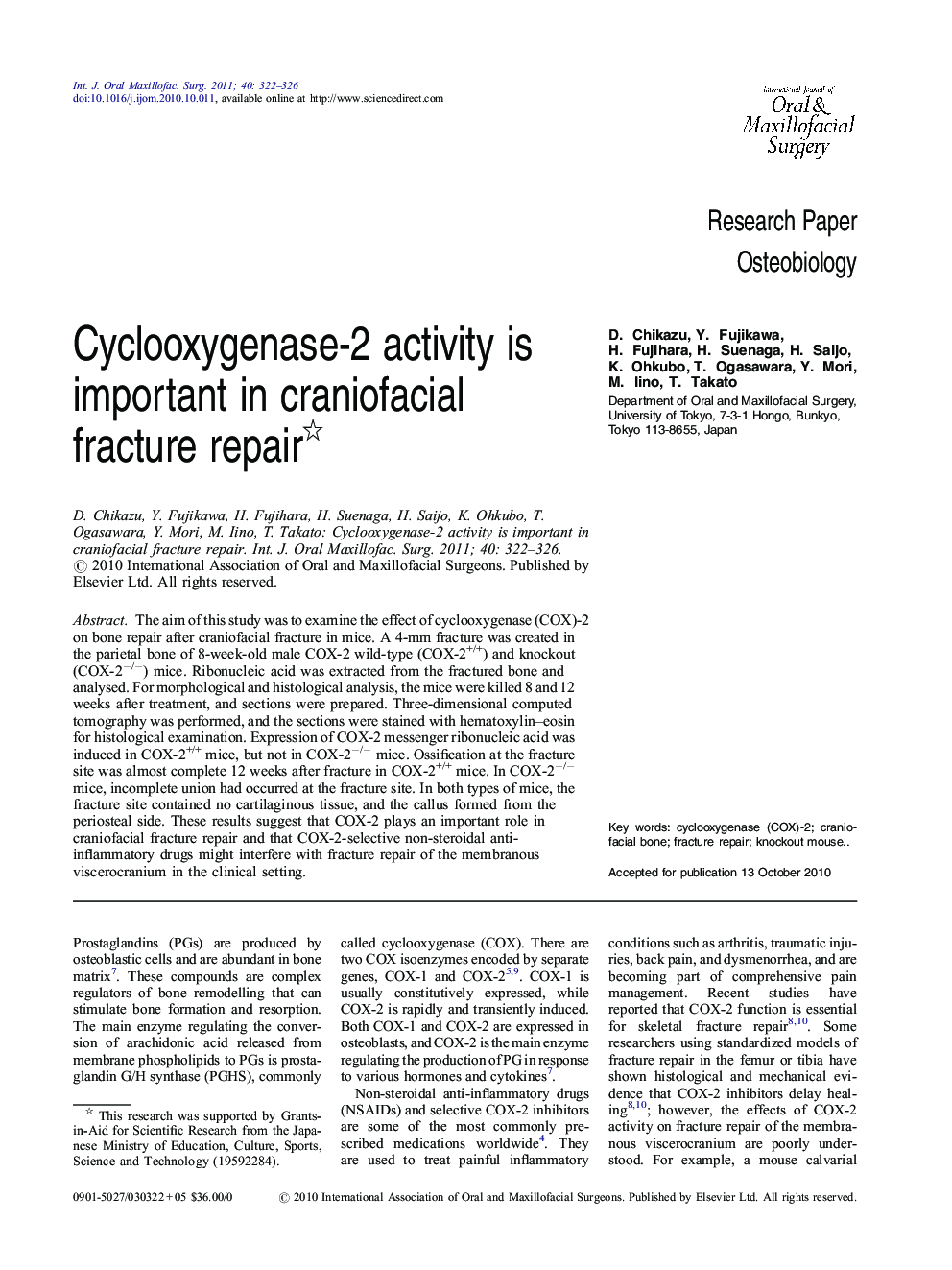| Article ID | Journal | Published Year | Pages | File Type |
|---|---|---|---|---|
| 6052499 | International Journal of Oral and Maxillofacial Surgery | 2011 | 5 Pages |
Abstract
The aim of this study was to examine the effect of cyclooxygenase (COX)-2 on bone repair after craniofacial fracture in mice. A 4-mm fracture was created in the parietal bone of 8-week-old male COX-2 wild-type (COX-2+/+) and knockout (COX-2â/â) mice. Ribonucleic acid was extracted from the fractured bone and analysed. For morphological and histological analysis, the mice were killed 8 and 12 weeks after treatment, and sections were prepared. Three-dimensional computed tomography was performed, and the sections were stained with hematoxylin-eosin for histological examination. Expression of COX-2 messenger ribonucleic acid was induced in COX-2+/+ mice, but not in COX-2â/â mice. Ossification at the fracture site was almost complete 12 weeks after fracture in COX-2+/+ mice. In COX-2â/â mice, incomplete union had occurred at the fracture site. In both types of mice, the fracture site contained no cartilaginous tissue, and the callus formed from the periosteal side. These results suggest that COX-2 plays an important role in craniofacial fracture repair and that COX-2-selective non-steroidal anti-inflammatory drugs might interfere with fracture repair of the membranous viscerocranium in the clinical setting.
Related Topics
Health Sciences
Medicine and Dentistry
Dentistry, Oral Surgery and Medicine
Authors
D. Chikazu, Y. Fujikawa, H. Fujihara, H. Suenaga, H. Saijo, K. Ohkubo, T. Ogasawara, Y. Mori, M. Iino, T. Takato,
